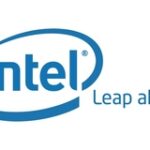Intel has been and still is one of the top leading manufacturer of electronic circuits in general and the manufacturing of CPUs (Central Processing Units) in particular. Their best-known product is the Pentium processor-series, and it has been a long history with this family of processors.
Pentium is a certain series of processors from Intel. It is a development of (and thus compatible with) older microprocessors from Intel such as 8088, 8086, 80286, 80386 and 80486. Computers built around these processors are usually called PC-compatible. Pentium works on the x86 architecture.
There are other manufacturers of processors with the same instruction set, such as AMD with its K5 and K6 processors. Computers with such processors could at that time be considered as PC-compatible.
PENTIUM
The first Pentium processor was launched in March 1993. It had a design fault which meant that the floating-point calculations could give quite a mysterious rash. There was also a bug that made an instruction to lock the processor until the computer was restarted. Pentium was Intel’s first processor that had several pipelines; it had two pipelines which were five steps long each.
PENTIUM PRO
Pentium Pro was introduced in November 1995. Its core (P6) was the direct foundation for the Pentium II and Pentium III and significant similarities are also seen with Pentium M, Core and Core 2, but with major revisions, particularly to the latter.
PENTIUM II
Intel’s successor to the Pentium Pro had the project name Klamath. When it went on sale in May 1997 it was named Pentium II. There were some changes to the Pro model.
A new feature from Intel was their decision to put the processor in a PC card with a Single Edge Contact-design (SEC), which fitted in the Slot 1 connector on the motherboard for Pentium II. Previously you could choose between a CPU from Intel or AMD for the same motherboard.
One advantage of the SEC was that L2-cache could be lifted away from the CPU and placed on the plug-in card, which resulted in lower manufacturing costs. However, the speed of L2-cache was reduced with this solution.
PENTIUM III 1999
Pentium III, introduces in February 1999. Pentium III came in two different versions:
Katmai was the first model to be released and was made for Slot 1. It had significant similarities with Pentium II. It had in fact the Pentium II label attached on the processor. They came first as 450 and 500 MHz. As early as May 1999 there was a 550 MHz version released, and in August 1999 a 600 MHz processor was released.
The second version of the Pentium III, Coppermine, had an integrated 256-bit L2-cache with lower latency, which was called Advanced Transfer Cache. Coppermine was unlike Katmai made for Socket 370. However, there were adapters available so that these processors could be used on a motherboard with Slot 1.
PENTIUM M
Pentium M is a further development of the Pentium III. Pentium M was originally developed with the intent to manufacture a low-power processor for mobile use
PENTIUM 4
Pentium 4 was the seventh-generation of x86-processors and was their first processor with a new design since the Pentium Pro in 1995, with the so-called NetBurst. The micro architecture Netburst made it possible to achieve very high clock speeds compared to previous models. The feature Hyper-Threading was introduced along with the Pentium 4, which means that one physical CPU behaves as two virtual CPUs. Pentium 4 has been out of production since 2006. Pentium 4 has been one of Intel’s most well-known processors.
PENTIUM D
Pentium D was the last processor manufactured by Intel under the name Pentium. The processor had two cores and has now completely replaced the single-core Pentium 4. Since the processor has two cores it will never be as busy as a single-core processor during the same workload.
SUMMARY
Intel’s Pentium-series of processor has laid the foundation of many new generations of processors throughout the years. And even if they’ve come up with other processors without the name Pentium I’m sure that the history of Pentium has meant a lot for the processors we’re seeing today.
Other processors from Intel, with the newest and most powerful at the bottom:
Atom
Celeron
Xeon
Core 2
Core i3
Core i5
Core i7

